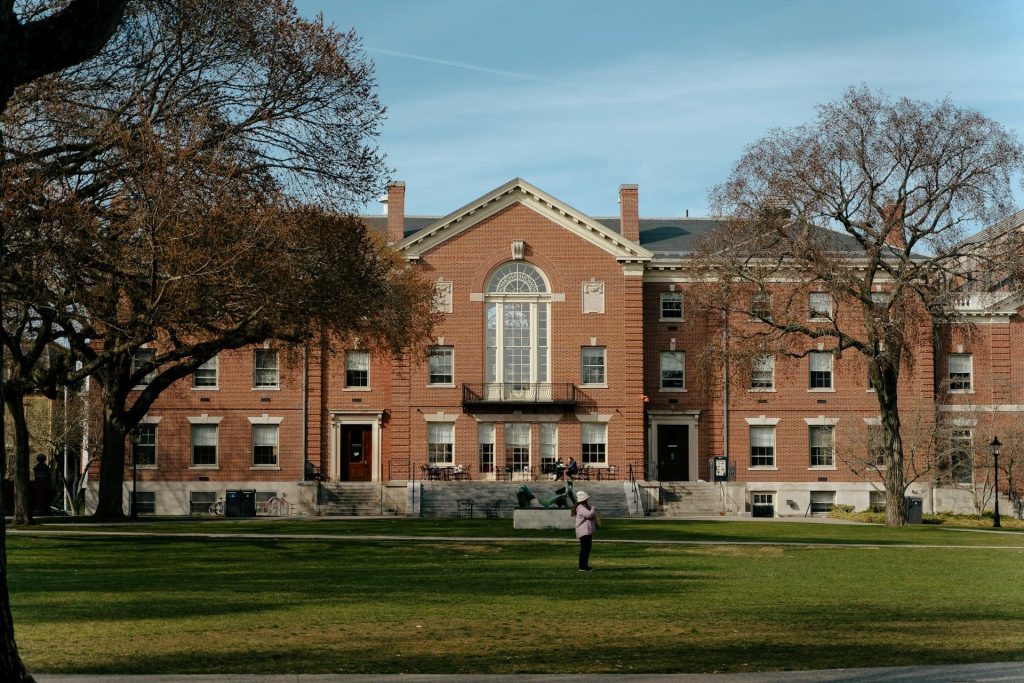In this blog post, we’ll dive into the fascinating history of The Cranberries and explore the talented individuals who made up this iconic Irish rock band.
From their humble beginnings in Limerick to their rise as one of the most successful alternative acts of the 1990s.
The Cranberries left an indelible mark on the music world, selling nearly 50 million albums worldwide.
Look closer at the key players behind the band’s unique sound and enduring legacy.
The Cranberries’ journey is a testament to the power of raw talent, passion, and determination.
Each member brought something special to the table, creating a musical chemistry that captivated audiences around the globe.
In the following sections, we’ll profile each band member and highlight their contributions to The Cranberries’ success.
List of Cranberries Band Members
1. Mike Hogan

(born April 29, 1973, in Limerick, Ireland) is the co-founder and bassist of the Irish rock band The Cranberries.
He formed the band 1989 with his brother Noel Hogan, drummer Fergal Lawler, and original lead vocalist Niall Quinn.
Mike’s solid bass playing has been crucial to The Cranberries’ sound throughout their career.
He has constantly been in the band, contributing to their studio albums and live performances.
Besides his work with The Cranberries, Mike is known for his involvement in the band’s various side projects and collaborations.
2. Noel Hogan
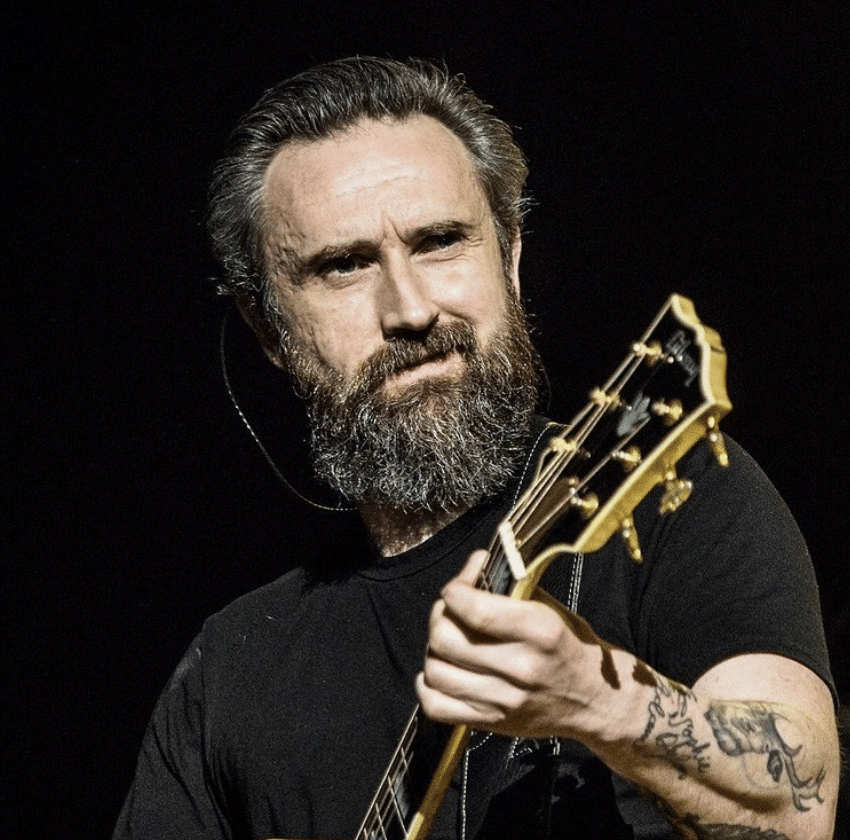
(born December 25, 1971, in Limerick, Ireland) is the co-founder, lead guitarist, and primary songwriter of The Cranberries.
Along with his brother Mike Hogan, drummer Fergal Lawler, and original lead vocalist Niall Quinn, Noel formed the band in 1989.
His guitar playing and songwriting have been instrumental in shaping the band’s distinctive sound, which blends alternative rock, indie pop, and Irish folk influences.
Noel has co-written many of The Cranberries’ most successful songs with lead vocalist Dolores O’Riordan, who joined the band in 1990.
In addition to his work with The Cranberries, Noel has been involved in various side projects, such as Mono Band and Arkitekt.
3. Fergal Lawler
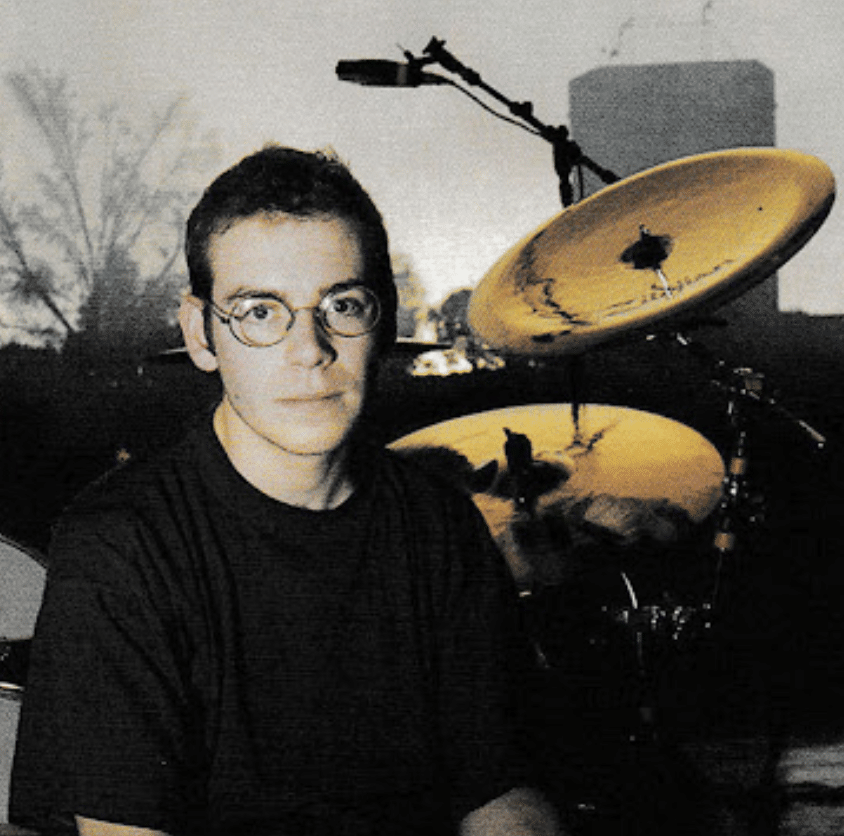
(born March 4, 1971, in Limerick, Ireland) is the co-founder and drummer of The Cranberries.
He formed the band in 1989 alongside brothers Noel and Mike Hogan and original lead vocalist Niall Quinn.
Lawler’s powerful and dynamic drumming has been a driving force behind the band’s music, contributing to their unique sound and success.
He has performed on all of The Cranberries’ studio albums and has constantly been in the band’s live shows.
In addition to his work with The Cranberries, Lawler has collaborated with other musicians and bands, showcasing his versatility as a drummer.
4. Dolores O’Riorda
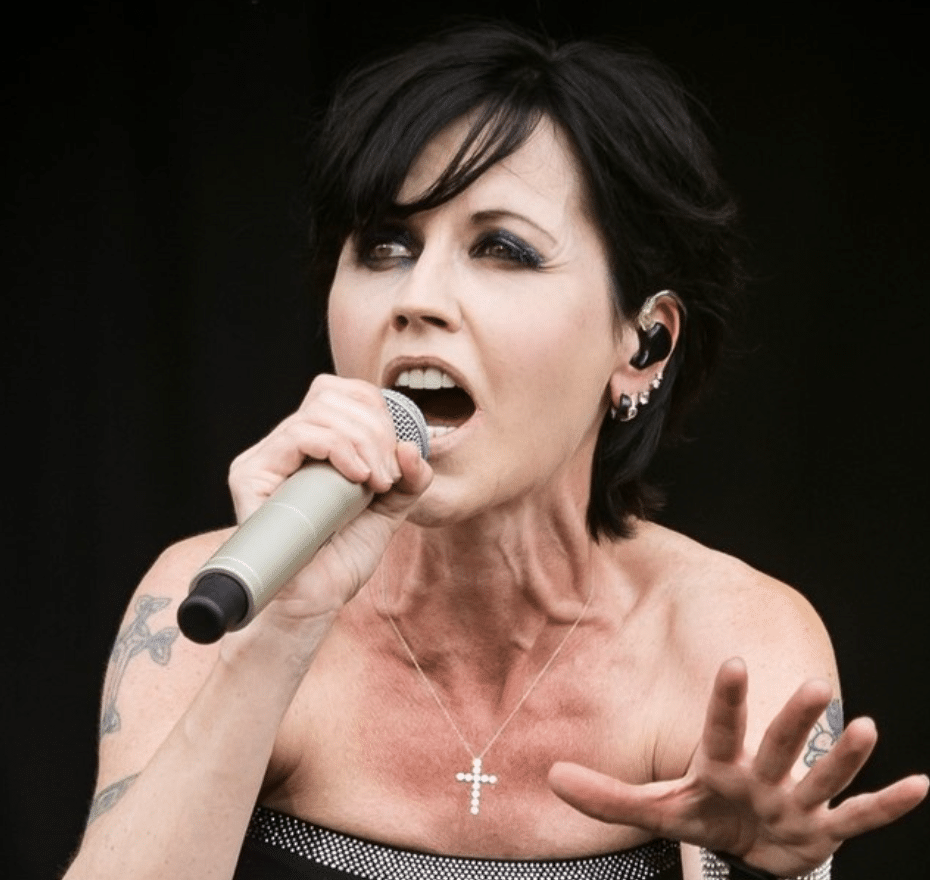
(born September 6, 1971, in Ballybricken, Ireland – died January 15, 2018, in London, UK) was the lead vocalist and songwriter of The Cranberries from 1990 until her tragic death in 2018.
She joined the band after the departure of original lead vocalist Niall Quinn and quickly became the face and voice of The Cranberries.
O’Riordan’s powerful and distinctive voice and heartfelt lyrics were crucial to the band’s international success.
She co-wrote many of the band’s hit songs with guitarist Noel Hogan, and her charismatic stage presence made her an icon in the music world.
O’Riordan also pursued solo projects and collaborations throughout her career, further cementing her status as a beloved and influential artist.
5. Niall Quinn

(born in Limerick, Ireland) was the original lead vocalist of The Cranberries from 1989 to 1990.
He formed the band with brothers Noel and Mike Hogan and drummer Fergal Lawler and contributed to the band’s early songwriting and performances.
However, Quinn left the band in 1990 to rejoin his previous group, The Hitchers.
His departure paved the way for Dolores O’Riordan to join The Cranberries as their new lead vocalist, a move that would significantly shape the band’s future success. Despite his short tenure with the band, Quinn played a role in developing The Cranberries’ sound and style early.
6. Russell Burton
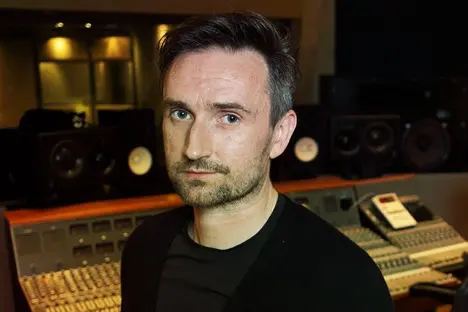
He is a touring musician who worked as a keyboardist and guitarist with The Cranberries from 1996 to 2003 and again in 2012.
He contributed to the band’s live performances during this period, helping to recreate their studio recordings’ layered and textured sounds in a concert setting.
Burton’s versatility as a musician allowed him to seamlessly integrate with the band’s established dynamic, enhancing their live shows and supporting their musical vision.
His work with The Cranberries showcased his talent and adaptability as a touring musician.
7. Steve DeMarchi

He is a touring musician who, from 1996 to 2003, collaborated with The Cranberries as a guitarist and backing vocalist.
He contributed to the band’s live performances during this period, providing additional guitar work and vocal harmonies that enriched their sound.
DeMarchi’s musical skills and experience allowed him to fit seamlessly into the band’s established lineup, supporting their creative vision and enhancing their stage presence.
His work with The Cranberries demonstrated his ability to adapt to different musical styles and his value as a touring musician.
8. Denny DeMarchi
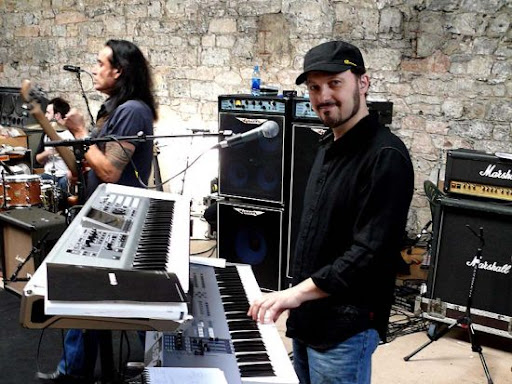
(died 2020) was a touring musician who worked with The Cranberries as a keyboardist, guitarist, and backing vocalist from 2009 to 2011.
He was the brother of Steve DeMarchi, who had previously toured with the band.
During his time with The Cranberries, Denny contributed to their live performances, adding depth and texture to their sound through his multi-instrumental abilities.
His versatility as a musician allowed him to support the band’s musical vision and enhance their stage presence.
Sadly, Denny DeMarchi passed away in 2020, leaving a legacy of musical contributions to The Cranberries and other projects throughout his career.
9. Johanna Cranitch

He is a touring musician who worked with The Cranberries as a backing vocalist from 2012 to 2017.
During this period, she contributed to the band’s live performances, providing vocal harmonies and support that complemented lead vocalist Dolores O’Riordan’s distinctive voice.
Cranitch’s musical skills and experience allowed her to integrate seamlessly with the band’s established sound, enhancing their live shows and supporting their musical vision.
Her work with The Cranberries showcased her talent as a vocalist and her ability to adapt to different musical styles in a live setting.
10. Olé Koretsky

He is a touring musician who worked with The Cranberries as a guitarist in 2017.
He is also known for collaborating with Dolores O’Riordan in the band D.A.R.K.
While touring with The Cranberries, Koretsky brought his musical skills and experience to the band’s live performances, contributing additional guitar work that complemented the band’s signature sound.
His involvement with The Cranberries demonstrated his versatility as a musician and ability to adapt to different musical projects.
Koretsky’s work with Dolores O’Riordan in D.A.R.K. further showcased their creative partnership and musical chemistry.
The Cranberries: Formation and Early Years (1989-1991)
1. Original Lineup
The Cranberries, originally named “The Cranberry Saw Us,” was formed in 1989 in Limerick, Ireland.
The band comprised four talented young musicians from the area, each contributing their unique skills to create a distinctive sound.
- Niall Quinn: The first lead vocalist and guitarist, brought energy and a unique voice to the group, shaping its early identity.
- Noel Hogan: His guitar playing added depth and melody.
- Mike Hogan: Noel Hogan’s brothers and bass complemented the guitar work, creating a solid foundation.
- Fergal Lawler: His dynamic drumming provided the driving force behind the band’s alternative rock style.
2. Early Departures
In early 1990, Niall Quinn left the band to return to his previous group, The Hitchers, leaving a significant void as the band established its sound and identity.
The remaining members placed an advertisement seeking a new lead vocalist, which led them to Dolores O’Riordan through a mutual connection.
O’Riordan’s memorable audition showcased her impressive vocal and songwriting abilities, securing her position as the new lead singer.
3. Key Developments During This Period
With O’Riordan on board, the band renamed themselves The Cranberries, signaling a fresh start and a new direction for their music.
This period was pivotal in shaping the band’s future sound and style.
The Cranberries recorded their first demo EP, “Nothing Left at All,” featuring O’Riordan’s vocals, which gained local popularity.
Early performances with the new lineup helped the band establish a dedicated fan base and attract the attention of record labels, setting the stage for their future success.
The Rise to Fame with Dolores O’Riordan (1990-2003)
Dolores O’Riordan’s arrival marked a transformative moment for The Cranberries, propelling them from a local Limerick band to an international sensation.
Her unique voice, songwriting prowess, and stage presence were instrumental in shaping the band’s success throughout the 1990s and early 2000s.
1. Dolores O’Riordan Joins the Band
After Niall Quinn’s departure, the band sought a new lead vocalist through advertisements.
Dolores O’Riordan, a young musician from Ballybricken, responded and auditioned for the role.
Armed with a keyboard, she performed a rough version of “Linger,” instantly captivating the band with her distinctive voice and songwriting abilities.
O’Riordan’s addition marked a turning point, prompting the band to rename themselves “The Cranberries” and embark on a new musical journey.
2. Key Albums and Successes With Dolores O’Riordan
Everybody Else Is Doing It, So Why Can’t We? (1993)
The Cranberries’ debut album showcased their unique blend of alternative rock and dream pop, featuring hit singles like “Linger” and “Dreams.”
The album’s commercial success in the US and UK marked the band’s entry into the international music scene.
No Need to Argue (1994)
Their second album, driven by the iconic single “Zombie,” solidified the band’s global fame.
With a heavier, more aggressive sound and politically charged themes, the album sold over 17 million copies worldwide.
To the Faithful Departed (1996)
The band’s third album showcased their willingness to experiment and tackle complex subjects, characterized by a rawer sound and politically charged songs.
While not matching the sales of its predecessors, it still achieved significant commercial success.
Bury the Hatchet (1999)
After a brief hiatus, The Cranberries returned with a more melodic sound on their fourth album.
Singles like “Promises” and “Animal Instinct” demonstrated the band’s growth and maturity.
Wake Up and Smell the Coffee (2001)
Produced by Stephen Street, the band’s fifth studio album represented their resilience and ability to adapt to evolving musical landscapes.
Though not as commercially successful as earlier releases, fans well-received it.
Dolores O’Riordan’s pivotal role in The Cranberries’ success cannot be overstated.
Her distinctive vocals, heartfelt lyrics, and commanding stage presence drove the band to international stardom.
The evolution of their sound through these five albums cemented The Cranberries’ legacy as one of the most influential alternative rock bands of the 1990s and early 2000s.
Hiatus and Solo Projects (2003-2008)
Following a decade of remarkable success, The Cranberries took a break in 2003, allowing the band members to explore solo projects and pursue personal interests.
This hiatus allowed growth and experimentation as each member ventured into new musical territories.
1. Dolores O’Riordan’s Solo Career
Dolores O’Riordan embarked on a solo career, releasing her debut album, “Are You Listening?” in 2007.
The album featured singles like “Ordinary Day” and showcased O’Riordan’s distinctive voice and songwriting prowess.
She followed up with “No Baggage” in 2009, demonstrating her artistic development and tackling personal themes.
O’Riordan’s solo work was well-received, highlighting her ability to captivate audiences as a standalone artist.
2. Noel and Mike Hogan’s Mono Band and Arkitekt
Meanwhile, Noel Hogan formed Mono Band, releasing a self-titled album in 2005 that featured various vocalists.
The project allowed Noel to explore electronic and alternative sounds, departing from The Cranberries’ signature style.
Later, he formed Arkitekt, releasing EPs in 2007 and 2009, further showcasing his musical versatility.
Mike Hogan’s contributions to these projects were integral in shaping their unique sound.
3. Fergal Lawler’s Work with Low Network and Other Projects
Fergal Lawler joined the Low Network and released an album in 2007.
As a musician and producer, he also collaborated with several other bands, including Walter Mitty and the Realists and Last Days of Death Country.
Lawler’s work during this period emphasized his adaptability and skill in various musical genres.
4. Specific Achievements and Collaborations
Each member’s solo endeavors led to notable achievements and collaborations.
Dolores O’Riordan’s solo tours and collaborations with other artists expanded her creative reach, while Noel Hogan’s Mono Band and Arkitekt projects garnered critical acclaim for their innovative approach.
Fergal Lawler’s contributions to other bands’ albums and projects further demonstrated his musical prowess.
The hiatus and solo projects profoundly impacted the band members’ individual growth and the future of The Cranberries.
The experiences and insights gained during this period would later influence the band’s creative process when it reunited in 2009.
The solo endeavors allowed the members to explore new artistic avenues.
As a reunited band, they brought a fresh perspective to their work, ultimately contributing to the final phase of The Cranberries’ remarkable career.
The Final Album and Legacy (2018-2019)
1. Dolores O’Riordan’s Death
The music world was shaken by the sudden passing of Dolores O’Riordan, the iconic lead singer of The Cranberries, on January 15, 2018.
Her death, caused by accidental drowning in a London hotel bathtub and exacerbated by alcohol intoxication, left a void in the hearts of fans and her bandmates.
The Cranberries were deeply affected by this tragic and irreplaceable loss, but they honored Dolores’s legacy by completing their final album, which they had worked on before her death.
2. Final Album: “In the End” (2019)
Before her untimely passing, Dolores and Noel Hogan had written and demoed several tracks for the band’s final album, “In the End.”
The remaining members of The Cranberries used Dolores’s demo vocals and built the album around them, ensuring the work met their high standards.
With the help of producer Stephen Street, who had worked with the band on previous albums, they created a cohesive and emotionally powerful record that served as a fitting tribute to their beloved lead singer.
“In the End” received critical acclaim upon its release in 2019, with critics praising its emotional depth and musical quality.
The album showcased the band’s signature sound while capturing the essence of Dolores’s unique voice, making it a poignant and heartfelt farewell to a legendary artist.
3. Band’s Legacy
The Cranberries’ impact on the music world cannot be overstated.
Their distinctive blend of alternative rock, folk, and pop-influenced countless artists and bands, leaving an indelible mark on the industry.
Songs like “Zombie,” “Linger,” and “Dreams” continue to resonate with audiences worldwide, cementing the band’s place in music history.
Throughout their career, The Cranberries received numerous accolades, including MTV Europe Music Awards and an Ivor Novello Award.
Following Dolores’s death, the remaining members were honored with posthumous recognitions, such as honorary doctorates, highlighting their enduring impact and contributions to music.
The band’s music remains relevant, frequently appearing in films and television shows and being covered by new artists.
Various tributes and memorials dedicated to Dolores and The Cranberries ensure that their legacy and influence will continue to inspire future generations of musicians and fans alike.
Despite the immense loss of Dolores O’Riordan, the band’s final album and the lasting impact of their music serve as a testament to their incredible talent and the indelible mark they left on the world.
Conclusion
The Cranberries’ journey is a testament to the power of music and the enduring impact of a band that dared to dream.
The band’s story is about passion, perseverance, and unwavering dedication to their craft, from their humble beginnings in Limerick to their rise as global superstars.
Through the years, each member – Dolores O’Riordan, Noel Hogan, Mike Hogan, and Fergal Lawler – brought their unique talents and personalities to create a sound that resonated with millions.
Though we lost Dolores too soon, her voice and legacy continue to inspire new generations of fans and musicians alike.
As we celebrate the band’s incredible journey, let us remember the lessons they taught us: to believe in ourselves, chase our dreams, and never give up on the power of music to unite and heal us all.
Frequently Asked Questions
Who Were the Original Members of The Cranberries, and How Did the Lineup Change Over the Years?
The original members were Niall Quinn (vocals), Noel Hogan (guitar), Mike Hogan (bass), and Fergal Lawler (drums). In 1990, Dolores O’Riordan replaced Quinn as lead vocalist.
What Impact Did Dolores O’Riordan Have on The Success and Sound of The Cranberries?
O’Riordan’s distinctive voice, songwriting skills, and stage presence were instrumental in shaping The Cranberries’ unique sound and global success, making her an iconic figure in rock music.
What Were the Significant Post-Breakup Releases by The Cranberries, and How Were They Received?
“In the End” (2019), the band’s final album featuring O’Riordan’s posthumous vocals, and “Remembering Dolores” (2021), a tribute compilation, were both well-received by fans and critics.
How Have the Remaining Members of The Cranberries Continued to Honor Dolores O’Riordan’s Legacy?
The remaining members have released posthumous albums, participated in tribute performances, and supported music video restoration campaigns to keep O’Riordan’s memory and the band’s legacy alive.
What Are Some of The Most Notable Tributes and Honors Received by The Cranberries and Their Members After Their Disbandment?
Notable tributes include Noel Hogan’s performance of “Zombie” with Kodaline at Electric Picnic Festival (2019), and honorary doctorates awarded to the band members by the University of Limerick (2019).















